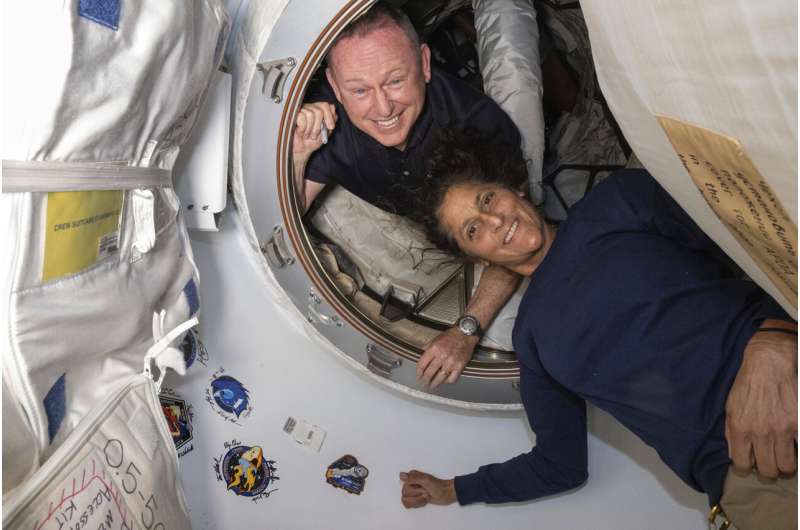When two veteran NASA astronauts blasted off on a test drive of Boeing’s new capsule, they expected to head home from the International Space Station in a week or so.
It’s now three weeks and counting for Butch Wilmore and Suni Williams as NASA and Boeing troubleshoot equipment problems that popped up on the way there.
Three potential landing dates were called off and their flight home is now on hold.
This week, Boeing said the Starliner capsule’s problems aren’t a concern for the return trip and “the astronauts are not stranded.”
The long-delayed test flight is the first with astronauts aboard. Boeing will eventually join SpaceX in ferrying crews to and from the space station for NASA.
A look at what’s behind the extended stay:
Why was the Starliner return trip postponed?
NASA wants more time to analyze problems in the spacecraft’s propulsion system, which is used to maneuver in flight. The propulsion system is attached to the capsule, but it doesn’t come back to Earth for inspection. It is ditched during reentry and burns up.
“We’re just taking a little more extra time to review all the data and also learn as much as we can while we have this service module in orbit,” Steve Stich, NASA’s commercial crew program manager, said at a news conference last week before the latest postponement.
The space agency also said it didn’t want the departure to conflict with spacewalks. This week’s spacewalk was called off after water leaked from an astronaut’s spacesuit while she was still inside the orbiting lab. Tuesday’s spacewalk was still on the schedule.

What are the problems being investigated?
Five of the capsule’s 28 thrusters went down during docking, as the capsule closed in on the space station. All but one thruster was restarted, and they worked during a later test firing, NASA said. Officials suspect that heat from all the thruster action at docking caused the shutdown. The one faulty thruster has been turned off and is not an issue for the return trip, Boeing said.
The capsule launched June 5 with one small helium leak, but four more leaks sprung up by the time it reached the space station. Helium is used to pressurize fuel for the thrusters, and a faulty rubber seal was suspected in the initial leak. Officials say there’s an amply supply of helium, and Boeing says the leaks are stable and not a concern.
“So far, we don’t see any scenario where Starliner is not going to be able to bring Butch and Suni home,” Stich said last week.
What’s next?
Boeing and NASA say they’ll consider landing dates once the spacewalks are over.
The capsule can remain at the space station for 45 days or longer if needed, Boeing said. In the meantime, mission managers continue to analyze the thruster trouble and helium leaks so they can resolve the problems before the next flight.
Wilmore and Williams have been pitching in with chores and research at the space station, along with their duties checking out systems on the Boeing capsule. NASA said there is no rush for them to leave, and there are plenty of supplies for the pair and the seven residents at the space station.
© 2024 The Associated Press. All rights reserved. This material may not be published, broadcast, rewritten or redistributed without permission.
Citation:
Why NASA astronauts are delayed at the space station after Boeing Starliner launch (2024, June 26)
retrieved 26 June 2024
from
This document is subject to copyright. Apart from any fair dealing for the purpose of private study or research, no
part may be reproduced without the written permission. The content is provided for information purposes only.